Physical Address
304 North Cardinal St.
Dorchester Center, MA 02124
Physical Address
304 North Cardinal St.
Dorchester Center, MA 02124
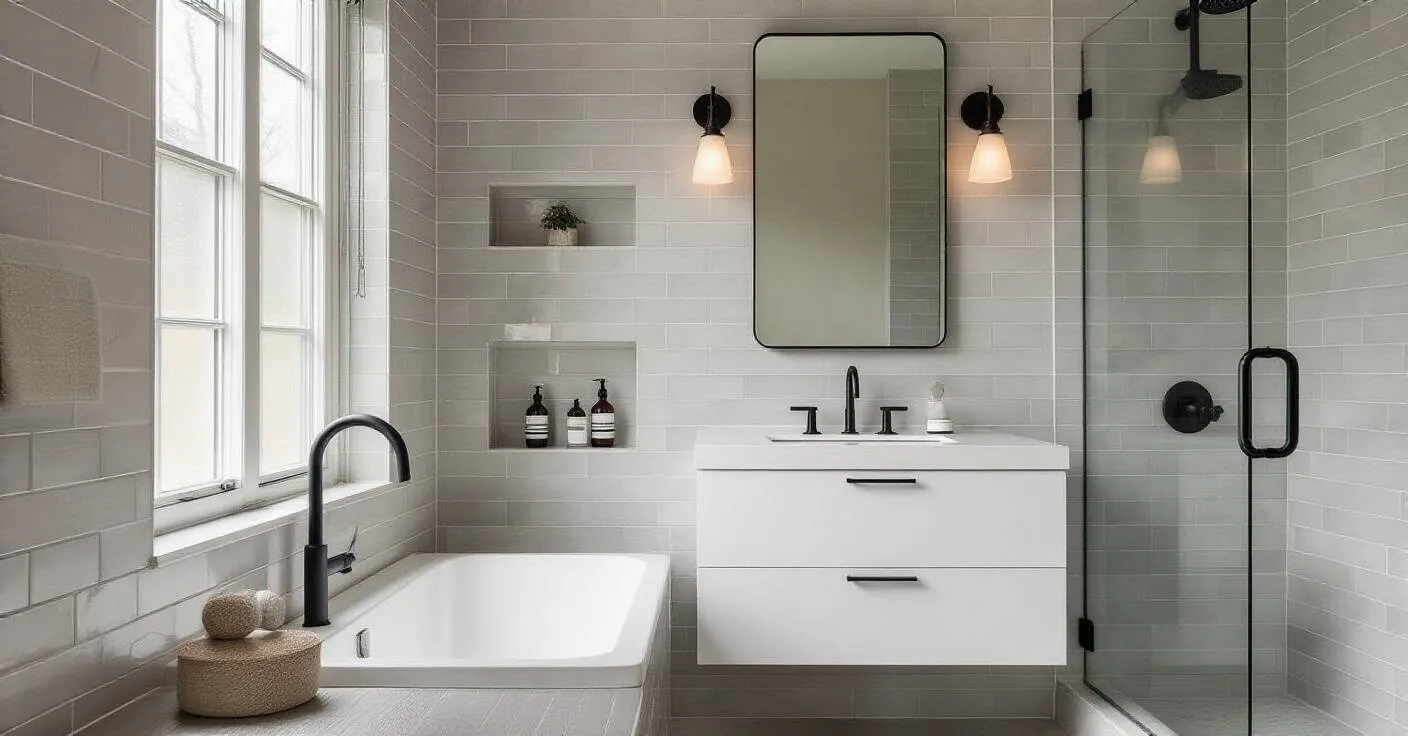
Breathe Mediterranean warmth into your bathroom with these 22 ideas. Diana shares secrets for creating a sun-soaked sanctuary with natural materials and relaxed elegance.
You know what people always ask me? They have these beautiful images pinned from holidays in Greece or Italy, but when they try to bring that feeling home, something gets lost. Their bathroom ends up feeling like a sterile, white box with a few blue accessories. It’s missing the soul, the warmth, the very air of the Mediterranean. It’s because they’re following rules from design blogs, not listening to the stories the materials want to tell.
The secret isn’t just about the color blue or adding a seashell. It’s about texture, light, and a kind of relaxed imperfection that feels like it has been loved for generations. It’s about creating a space where you can wash away the day and feel connected to something simple and beautiful. Forget the corporate checklists. Let me tell you how we really do it.
Everything beautiful begins with a strong heart. In design, that means getting your foundation right before you even think about the pretty details. This isn’t the boring part; it’s the most important part. It’s where you decide the story your room will tell.
A “theme” sounds so formal, doesn’t it? I prefer to think of it as choosing a destination. Are we in a whitewashed villa in Santorini, a rustic farmhouse in Tuscany, or a sun-drenched riad in Morocco? You must choose one. I once had a client in Puglia who wanted a bit of everything—sleek modern fixtures, rustic barn wood, and glittering Moroccan tiles. Her bathroom ended up looking like a confused tourist shop, with no peace to be found.

So, pick your place. Close your eyes and imagine it. What do you see? What do you feel? That feeling is your guide. Don’t just collect things you like; collect things that belong to that place. Your theme isn’t a set of rules; it’s a promise to yourself to create a space that feels whole and harmonious, a true escape.
Now that you know where we’re going, let’s talk about the colors of that place.
Forget the paint chips under harsh fluorescent store lighting. The Mediterranean palette comes from the earth, the sea, and the sky. It’s the chalky white of a sun-baked wall, the deep, moody blue of the Aegean at dusk, the soft green of olive leaves, and the warm terracotta of a simple clay pot. These colors have a history and a soul. Your job is to listen to your space and see which ones belong there.
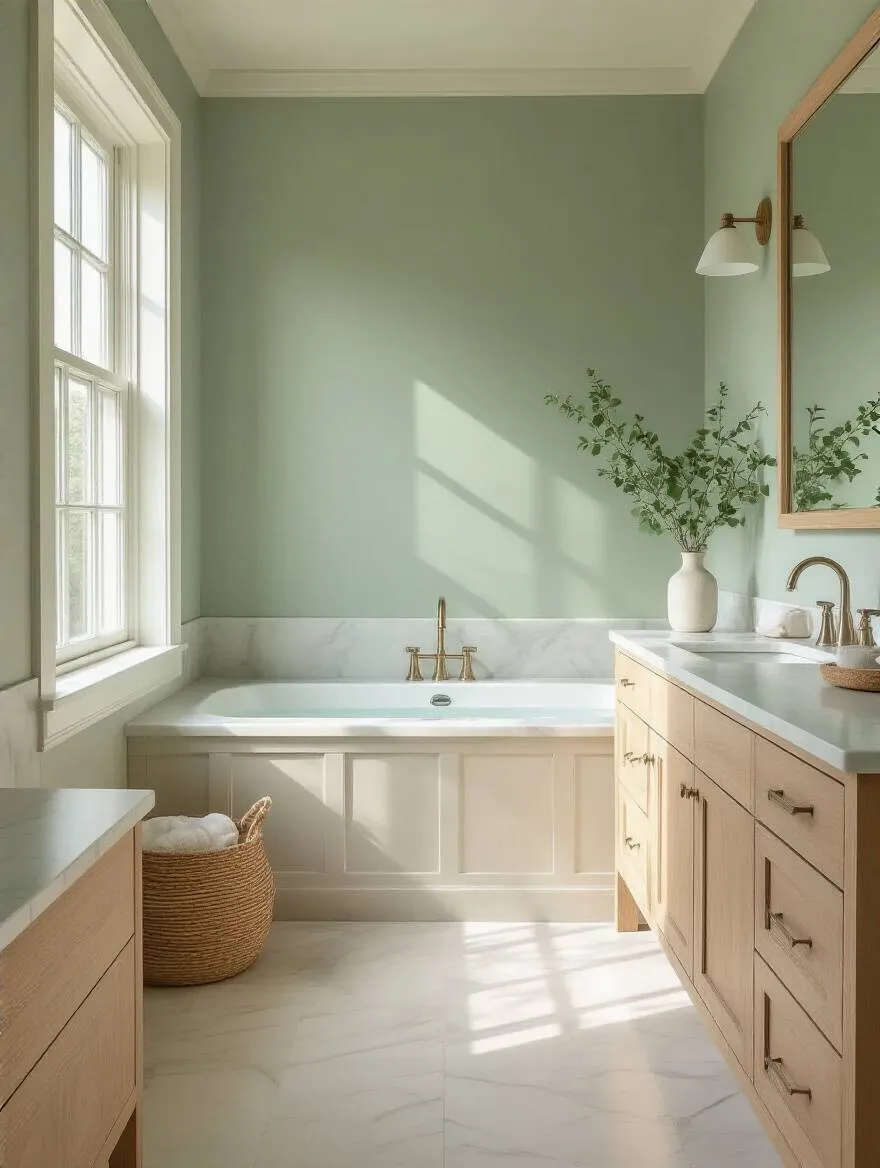
Here’s the shortcut everyone misses: look at your natural light. Does the sun pour in, demanding a bright, reflective white to dance upon? Or is the room darker, calling for a warm, enveloping ochre to make it glow from within? Get large paint samples and watch them all day. See how the color changes with the light. I tell my clients, “The most common BS in design is that ‘beige’ is the only safe neutral.” Nonsense. The soft grey of worn limestone or the gentle warmth of plaster are neutrals with far more character.
Once we have our colors, we must talk about the practical side of things, the budget.
Ah, the budget. Let’s not see it as a restriction, but as a way to honor our project. When you cook a beautiful meal, you use the best ingredients you can afford; you don’t throw everything in the pot. It’s the same with design. Setting a budget helps you make choices with intention. It forces you to decide what truly matters.

Here’s my advice, learned the hard way after a friend spent her entire budget on trendy floor tiles, leaving nothing for good lighting. Decide where to splurge and where to save. Splurge on the things you touch every day: a heavy, solid faucet that feels good in your hand, or thick, thirsty towels. Save on things that are easier to change later, like artwork or a small stool. A clear budget isn’t about limiting your dream; it’s about making your dream a smart, achievable reality.
Now for the materials, the bones of our beautiful bathroom.
In the Mediterranean, we build things to last for generations. We choose materials that get more beautiful with age. The enemy of a bathroom is moisture, yes, but the enemy of a beautiful bathroom is plastic. So many modern bathrooms are filled with acrylics and veneers that look cheap and will end up in a landfill. This is the biggest piece of BS—that new and shiny is always better.
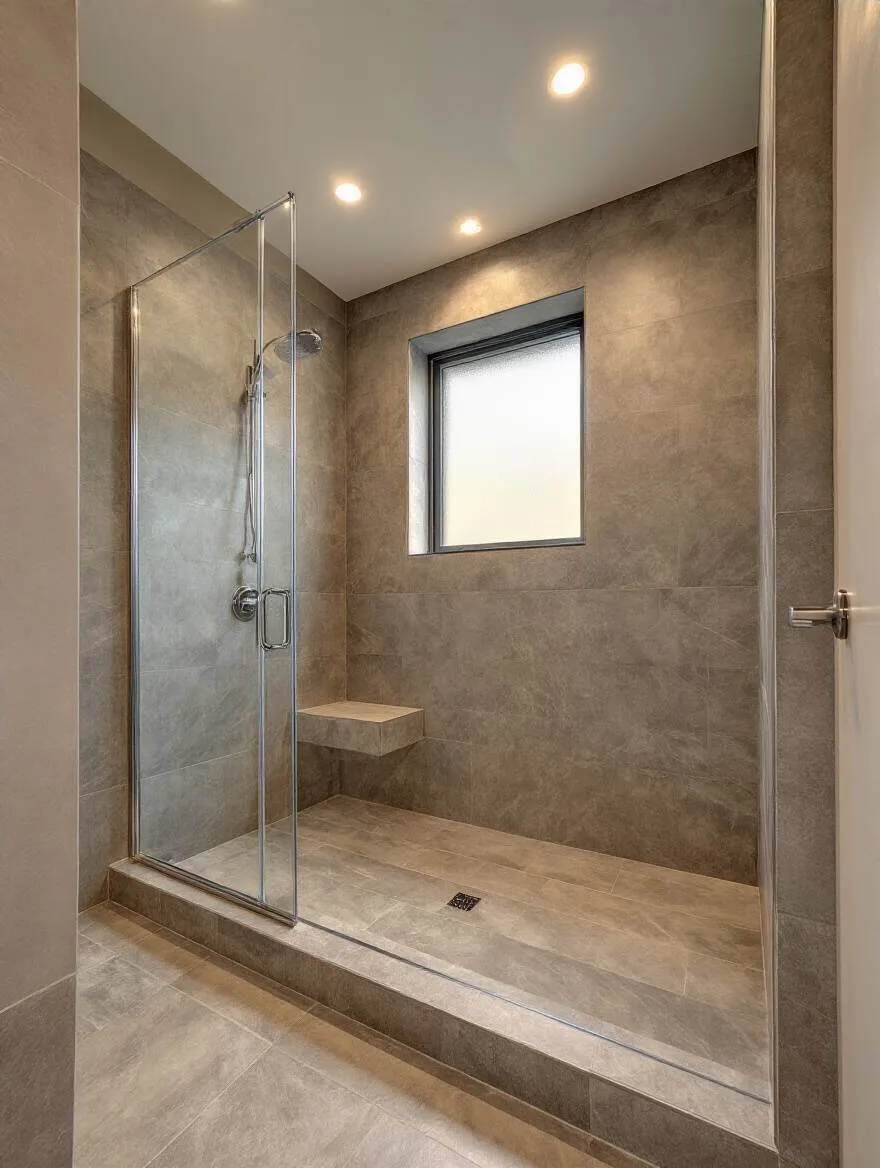
I urge you to choose natural, time-tested materials. Think Tadelakt, a traditional Moroccan waterproof plaster that has a soft, glowing finish unlike any other. Think of limestone floors, which stay cool underfoot, or Zellige tiles from Fes, where every single tile is unique, handmade, and perfectly imperfect. These materials have a story. They might show a little wear over time, a patina, but that’s not a flaw—it’s character. It’s proof of life.
Now for the pieces you interact with every single day. These aren’t just functional items; they are the handshake of the room. They should feel good, work beautifully, and add to the story.
The hardware in your bathroom is like the jewelry on a simple linen dress—it makes all the difference. You can have the simplest room, but if you have a beautifully crafted, solid brass faucet, the whole space feels elevated. I’m not talking about the flimsy, coated metals that chip and tarnish. I mean real, substantial metal.
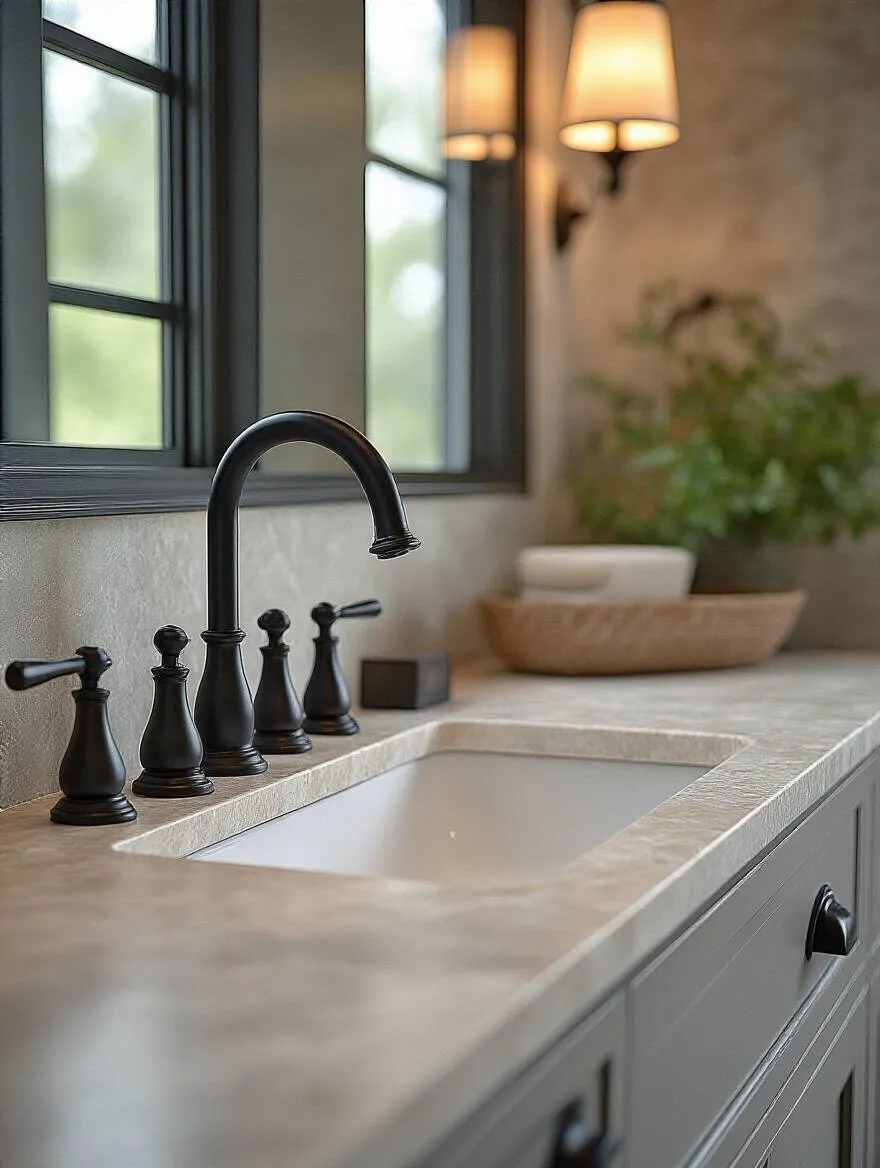
My pet peeve is shiny, lacquered brass that tries to stay perfect forever. Perfection is boring. I love unlacquered brass. The first time you touch it, it’s brilliant, but over time, it will darken and stain where your hands touch it most. It develops a patina. It tells a story of all the hands that have used it. This is the ultimate luxury—a material that lives and changes with you. It’s a small detail that whispers quality instead of shouting for attention.
From the jewelry, we move to the storage that keeps our sanctuary serene.
A serene bathroom is a clutter-free bathroom. But I’m not a fan of complicated, built-in organizing “systems.” The Mediterranean approach is simpler, more organic. The most important thing you can do is have less stuff. Be ruthless. But for the things you must keep, let’s store them beautifully.
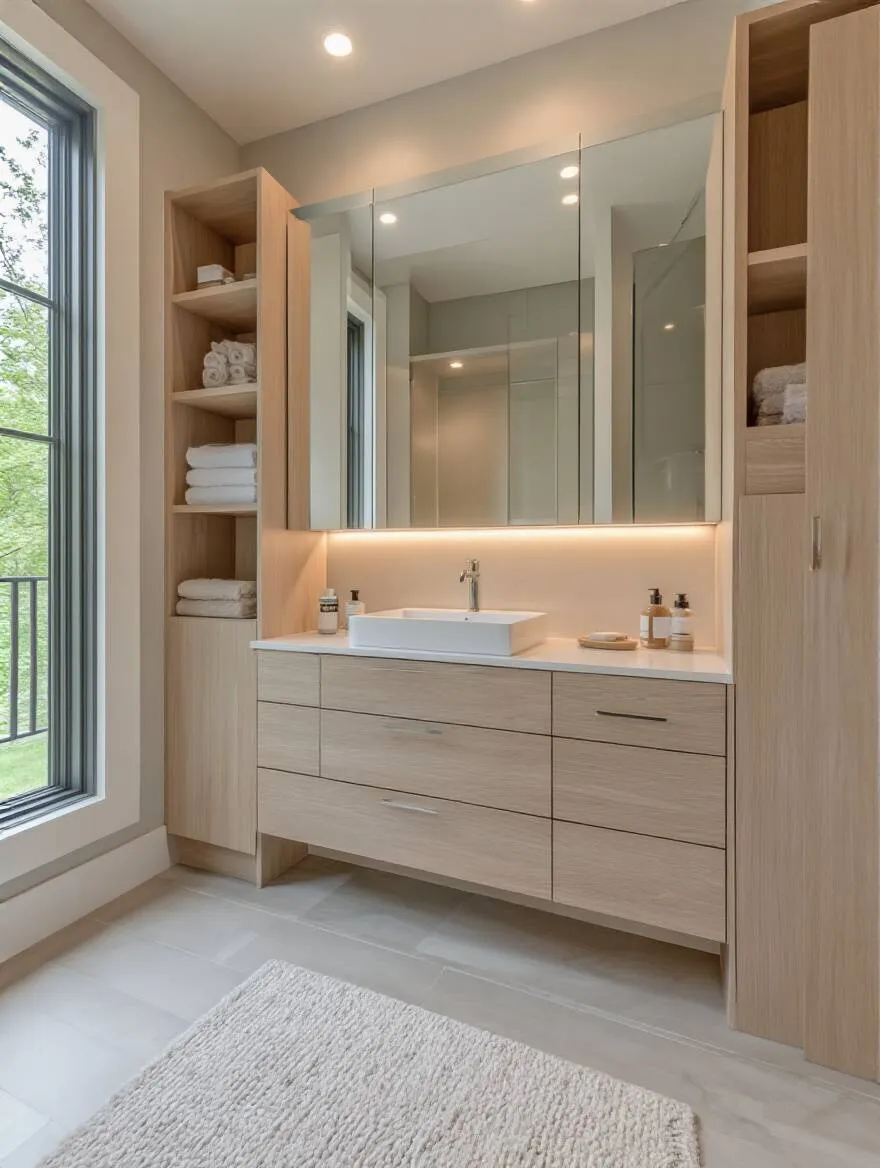
Think about niches carved directly into a plaster wall—a classic feature in Cycladic homes. They’re perfect for holding soap or a small bottle of oil. Beyond that, woven baskets are your best friend. A large one on the floor for towels, a smaller one on a shelf for lotions and brushes. They add texture, warmth, and hide the necessary clutter without sealing it away in a plastic box. It’s about finding beauty in the practical.
This leads us to the mirror, which is so much more than a place to see your reflection.
In a region blessed with so much sun, a mirror is a tool for painting with light. A big, simple mirror can do more for a small, dark bathroom than any other trick. It captures the light from a window and throws it into the darkest corners, making the entire space feel bigger and more alive.
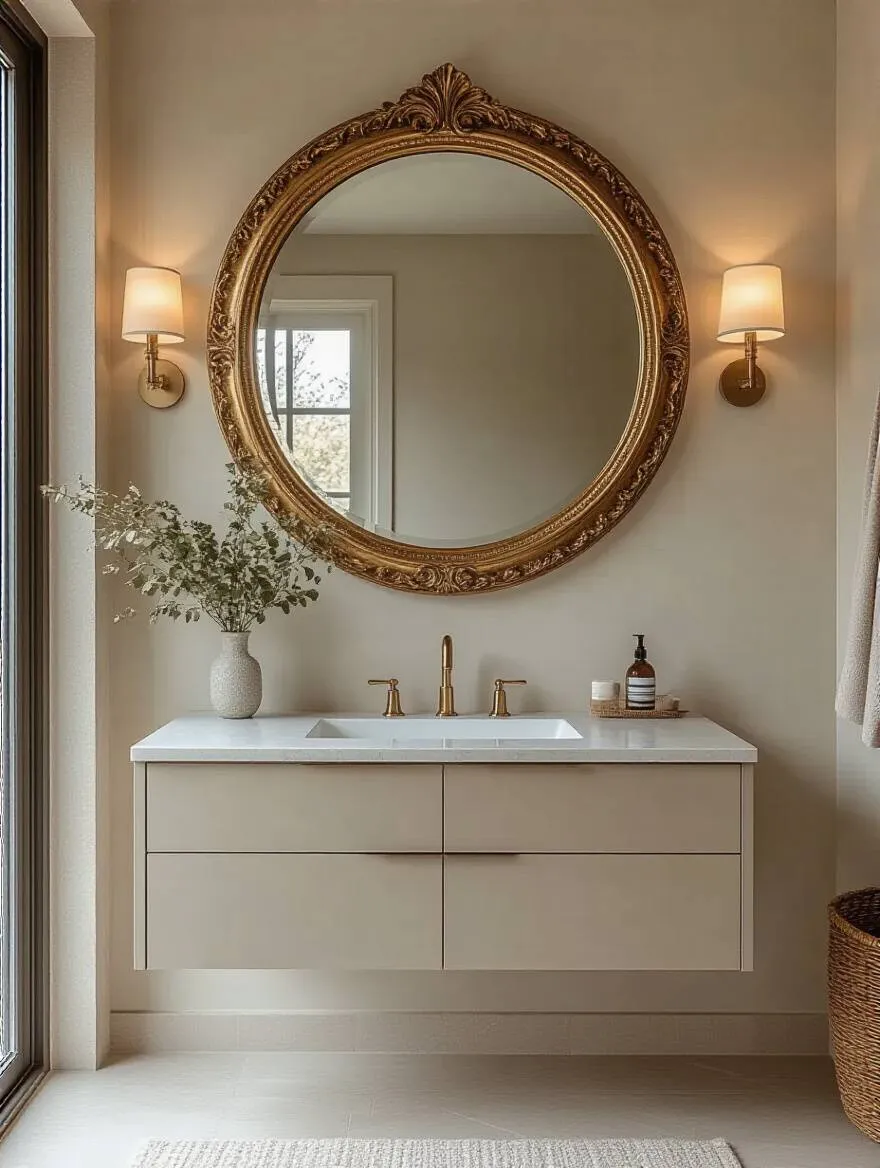
But don’t just grab a boring, frameless rectangle. Find a mirror with character. Maybe it’s an arched shape that reminds you of an old door in Spain. Perhaps it has a simple, weathered wood frame, or a thin, delicate iron one. I once found a beautiful old gilded mirror at a market in Provence; the glass was slightly foxed and imperfect. We hung it in a client’s tiny powder room, and it became the soul of the space, reflecting the light with a soft, warm glow that made everyone look beautiful.
And what about the shower, the centerpiece of the room?
So many people default to a glass door, and while that can be lovely, don’t forget the simple beauty of a shower curtain. There is nothing quite like a long, flowing curtain of pure, heavyweight linen. It softens all the hard surfaces in a bathroom—the tile, the stone—and adds a beautiful, touchable texture. When the window is open, it will billow gently in the breeze. It feels relaxed and romantic.
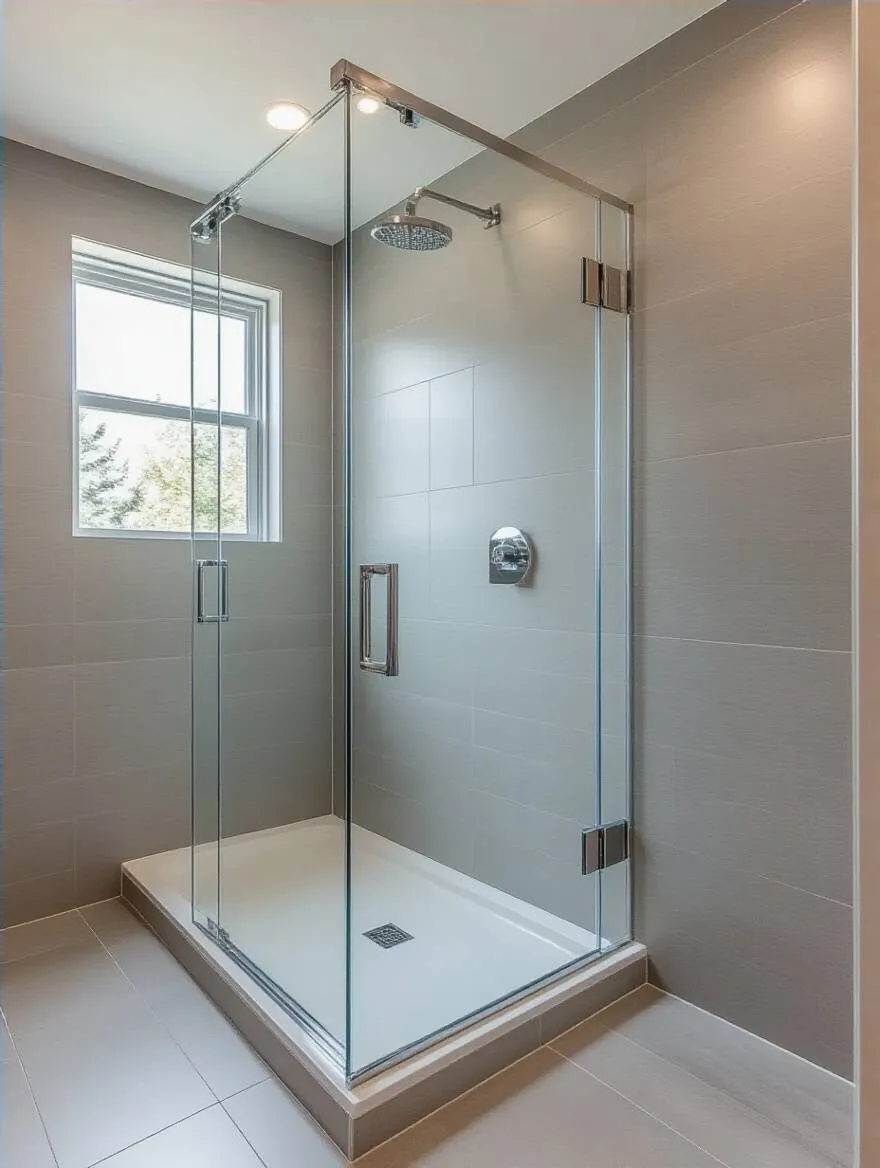
If you must have glass, consider a simple, frameless panel for a walk-in shower. The goal is openness. You don’t want to feel like you are stepping into a sealed-off cubicle. A walk-in shower with continuous floor tile makes the room feel so much larger and more integrated. It’s the difference between a functional shower stall and a proper Roman bath experience.
The vanity is another place to bring in a piece with history.
Forget the blocky, built-in vanities that come from a big box store. A freestanding vanity is your chance to use a real piece of furniture in the bathroom, and that one choice can elevate the entire room. It could be an old wooden chest of drawers from your grandmother, with a stone sink vessel placed on top. It could be a simple, rustic table with an open shelf below for baskets and towels.
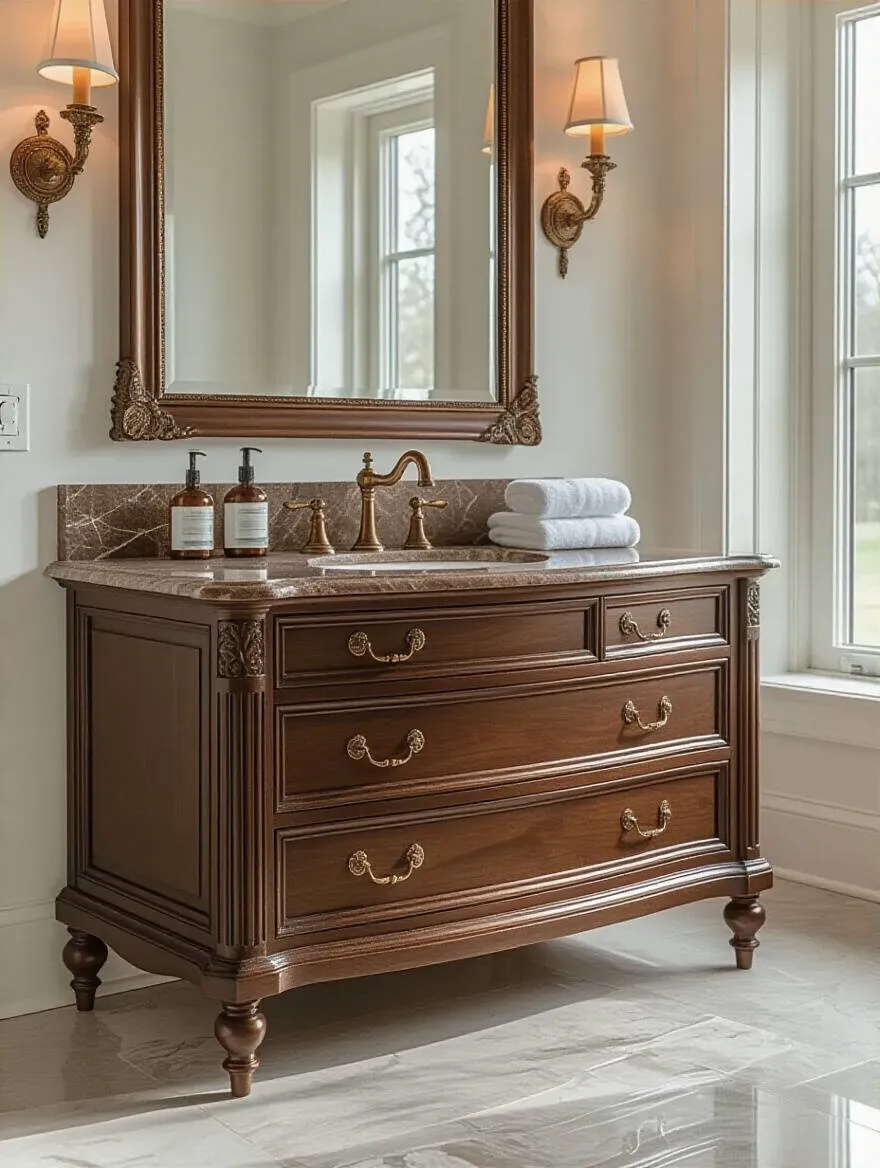
By using a piece of furniture, you are adding character and a sense of history. It makes the bathroom feel less like a utility room and more like a furnished, intentional part of your home. It creates air and space around it, making the room feel larger. This is the ultimate secret: treat your bathroom with the same respect you give your living room, and it will become a space you truly want to live in.
Here is where we add the softness, the personality, the layers that make a house feel like a home. The hard surfaces are the bones; these are the soul.
Never, ever underestimate the power of a good towel. Thin, scratchy towels are a crime against self-care. Your bathroom should have thick, heavy, thirsty towels—preferably in white or a soft, natural hue. We’re talking about high-quality Egyptian or Turkish cotton that feels like a hug when you wrap it around yourself.
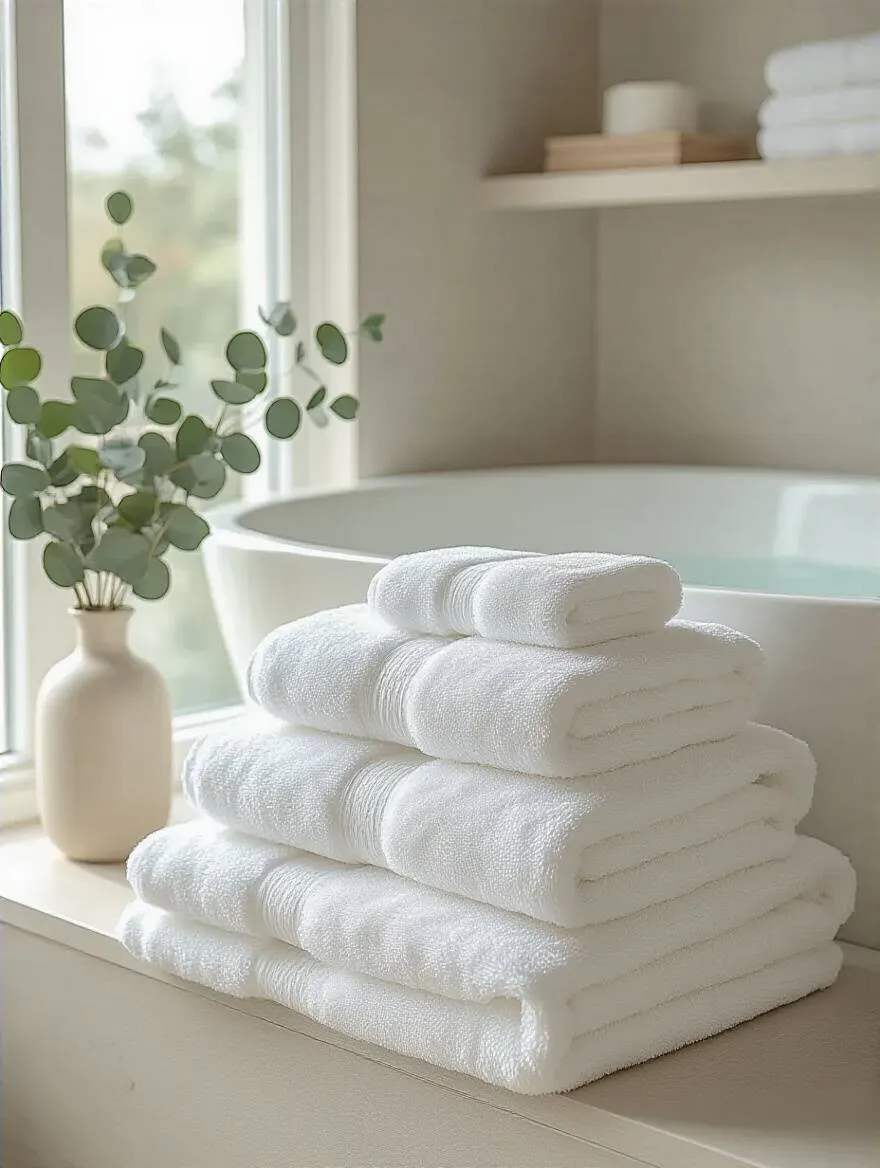
Don’t hide them away. Roll them and stack them in an open niche or a large woven basket. Drape one over a simple wooden ladder leaning against the wall. The sight of abundant, clean, plush towels instantly signals comfort, generosity, and luxury. It’s what the best small hotels on the Amalfi Coast do, and it makes every guest feel pampered. It’s a simple act of hospitality, even if it’s just for you.
And on the walls, let’s hang something with meaning.
The walls of your bathroom should not be bare. But please, no generic “Live, Laugh, Love” signs or mass-produced beach art. The art in your bathroom should be personal. It could be a small, simple charcoal sketch you bought from an artist on the street in Rome. It could be a beautiful piece of driftwood you found on the beach, or a cluster of antique tiles you found at a flea market.
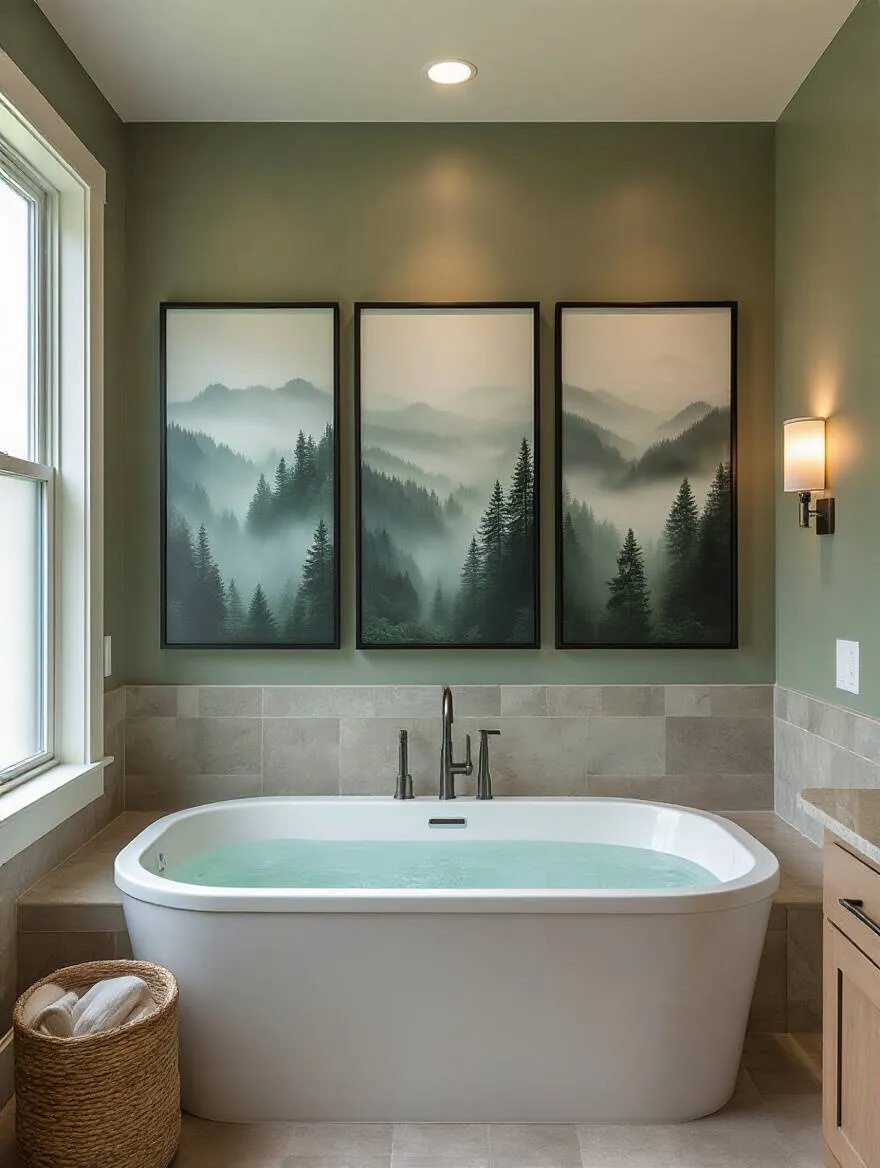
I once helped a client frame a beautiful, age-stained linen dish towel that belonged to her Italian nonna. It was simple, humble, and deeply personal. It told a story. The bathroom is an intimate space, so the art should be intimate, too. Choose something that makes you smile, or that brings back a beautiful memory. That is the only rule.
Next, something soft underfoot.
I confess, I’m not a huge fan of the typical fluffy bath mat. They often look messy and can get musty. In many Mediterranean homes, you’ll find a simple wooden duckboard mat, made of teak or bamboo, right outside the shower. It’s clean, it drains well, and it brings a beautiful, natural element into the room.
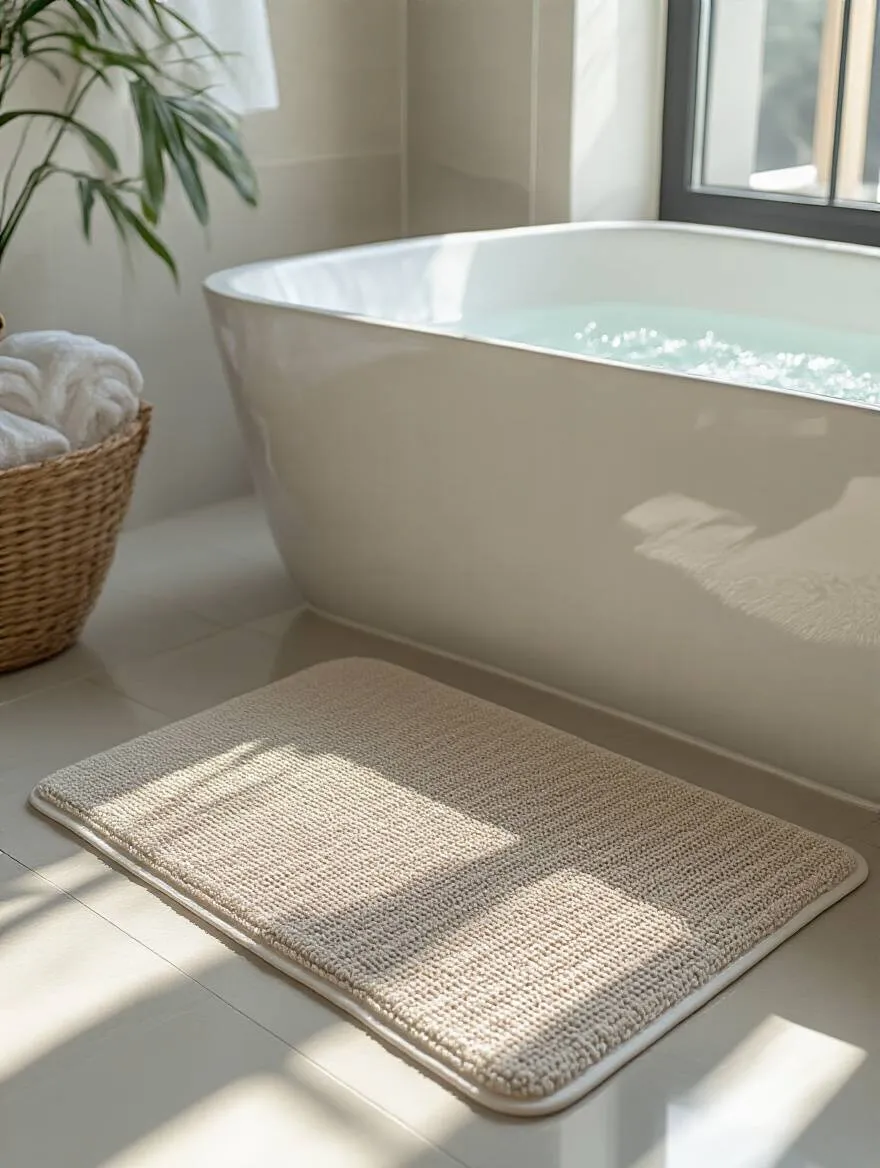
If you crave softness, however, then choose a flat-woven cotton rug, like a small Turkish kilim. They are beautiful, absorbent, and bring a wonderful layer of pattern and texture to the floor. They feel much more like a “real” rug and less like a temporary bath accessory. Just be sure to put a non-slip pad underneath for safety. It makes the whole room feel more grounded and decorated.
Now, for the invisible decor that makes all the difference.
Scent is the most powerful memory trigger we have. Your bathroom should smell clean, but not of chemicals. It should smell of nature. Forget the plug-in air fresheners. We want something more subtle, more real.
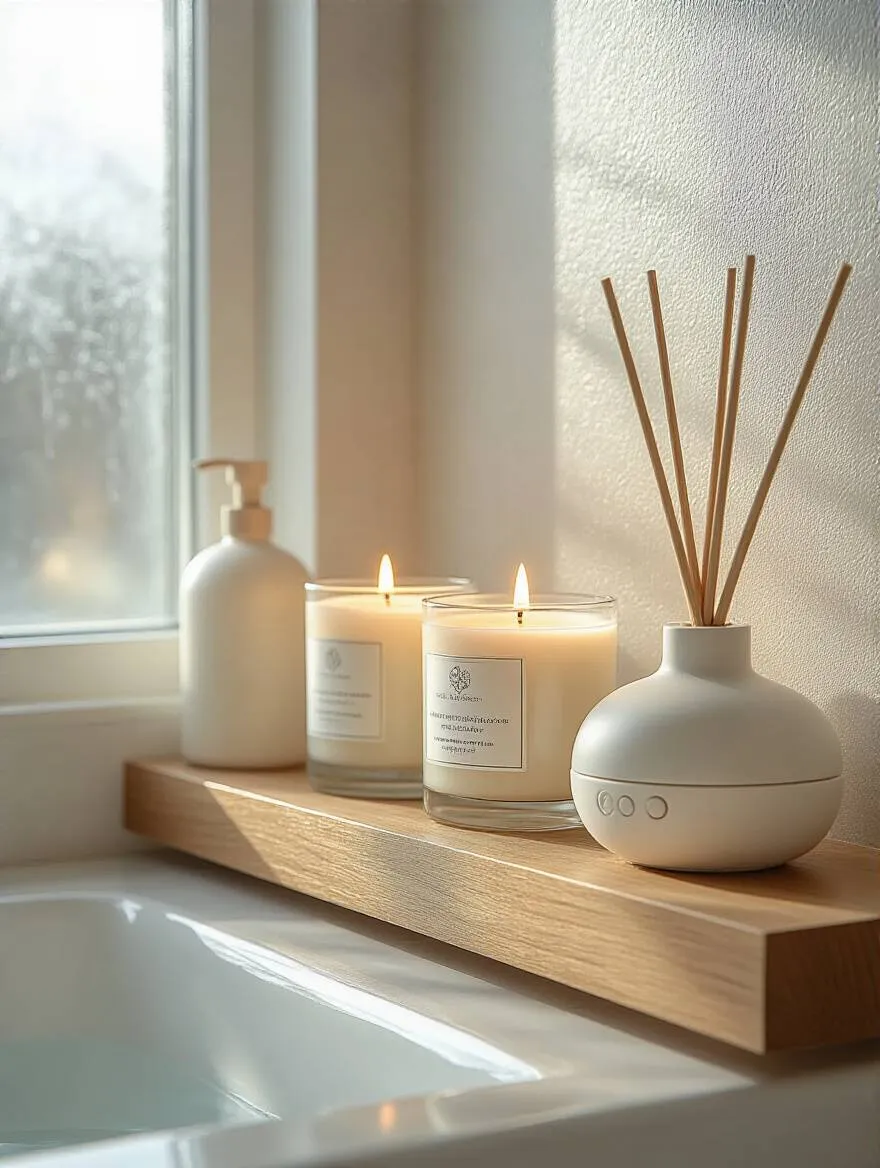
A simple reed diffuser with essential oils is perfect. Think of scents from a Mediterranean garden: lemon, rosemary, lavender, orange blossom, or even the clean, resinous scent of fig. A beautiful candle in a simple ceramic or glass holder adds a soft, flickering light for evening baths. The scent shouldn’t scream at you when you walk in; it should be a gentle whisper that makes you take a deep, relaxing breath.
Light and life. These are the two elements that can make any space feel magical. Without them, even the most expensive room feels dead.
Can we talk about the saddest thing in bathroom design? It’s the single, harsh overhead light. It casts unflattering shadows and makes a beautiful space feel like a surgical theater. It’s a crime! Good lighting is everything. You need layers.

First, you need gentle, overall ambient light. Then, you need specific task lighting. For the vanity, this means sconces on either side of the mirror, at eye level. This is the key. It lights your face evenly and beautifully, with no shadows. And finally, you need a little accent light, a little magic—maybe a small lamp on a shelf or a candle. And all of it, every single light, should be on a dimmer.
Which brings me to my next, most passionate point.
If you do only one thing from this entire list, let it be this. Installing dimmer switches is the single most transformative, and relatively inexpensive, thing you can do for your bathroom. It is non-negotiable.
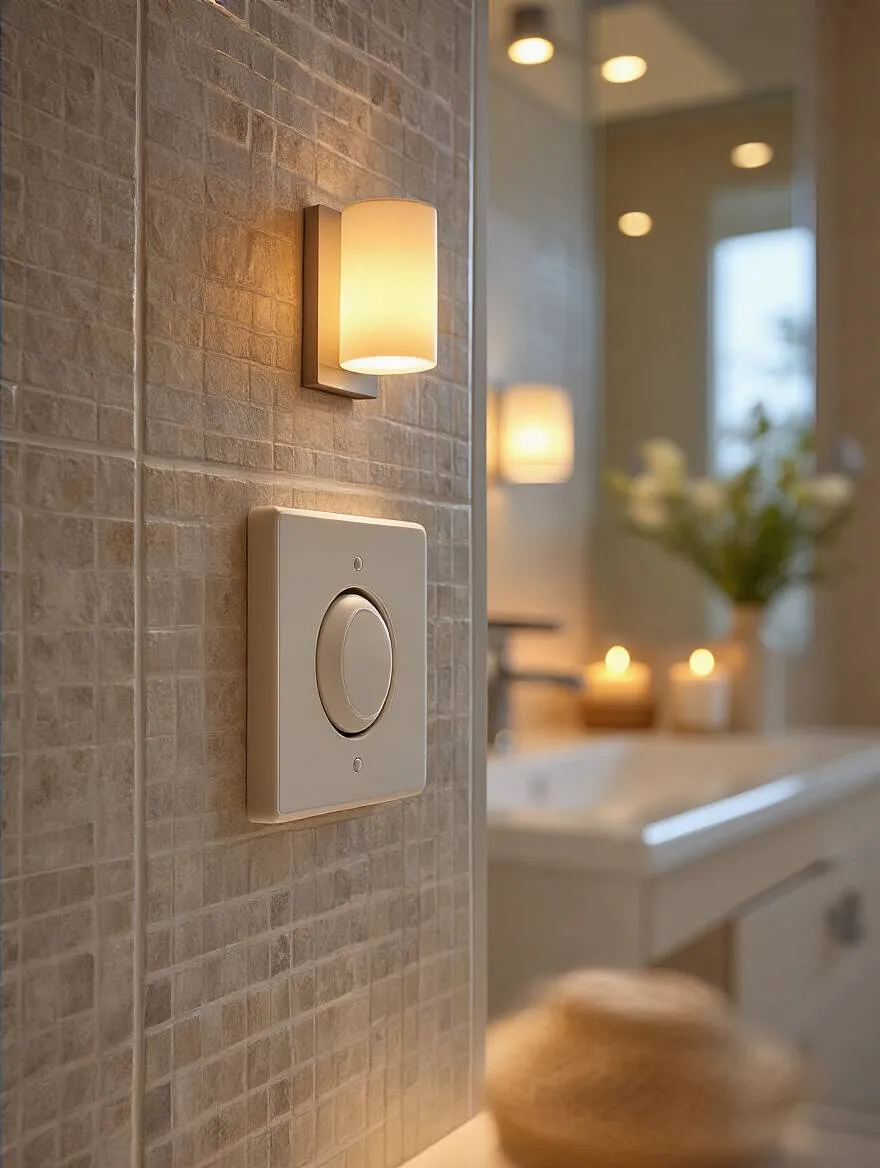
With a dimmer, your bathroom can be bright and energetic in the morning when you need to get ready. But in the evening, you can slide that light down to a soft, warm glow. Suddenly, your functional bathroom becomes a restorative sanctuary, a place for a long soak, a glass of wine, and quiet reflection. Without a dimmer, you only have two options: interrogation-room bright, or total darkness. A dimmer gives you every mood in between. It gives you control.
Now, let’s bring a bit of the outdoors in.
Every room needs something living in it. In the bathroom, a space of water and steam, a plant feels especially right. The humidity is a gift to them! You don’t need a jungle, just a touch of green.
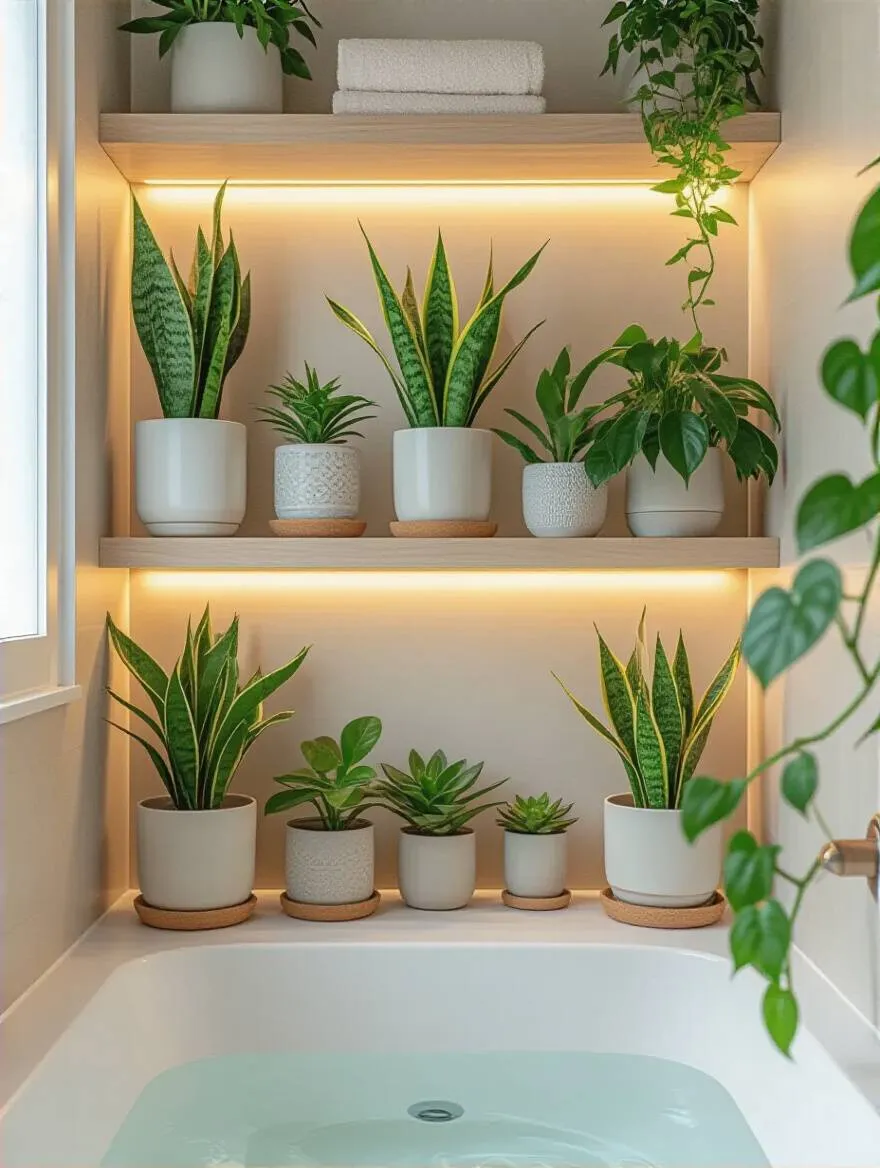
Forget finicky plants. Go for something sculptural and hardy. A snake plant is almost impossible to kill and has a beautiful, architectural shape. A pothos can trail elegantly from a high shelf. My personal favorite? A single, gnarled olive branch in a tall vase of water. It’s simple, it’s sculptural, and it’s quintessentially Mediterranean. The pot is as important as the plant—choose something made of terracotta or simple, unadorned ceramic.
Lighting doesn’t just come from a dimmer; it comes from the fixture itself.
As I said before, side lighting is key. But let’s think about the sconces themselves. They are a wonderful opportunity to add character. You can find beautiful, simple sconces in aged brass or black iron that feel both timeless and modern.
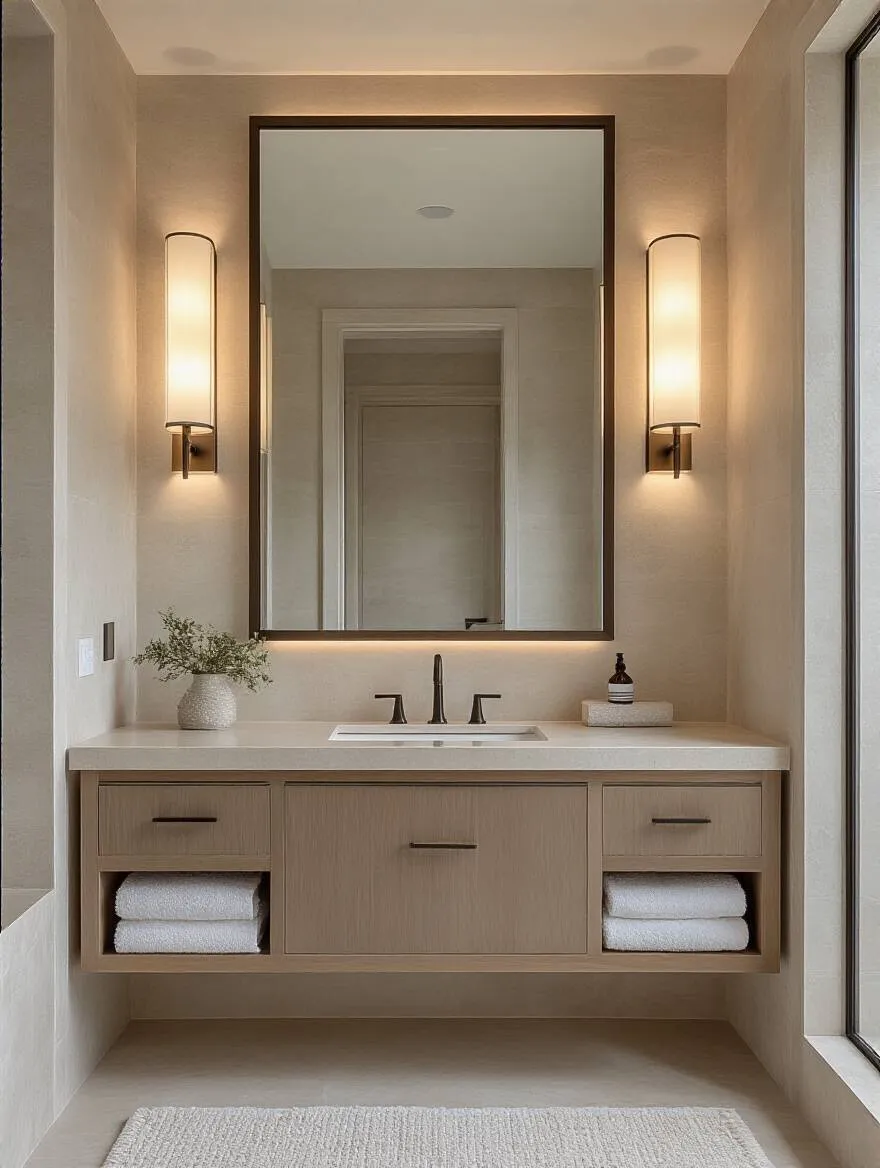
You can also use a small pendant light. Imagine a tiny pendant with a woven shade hanging in a corner, or on one side of the vanity mirror. It creates a small pool of light and a beautiful focal point. It’s unexpected. It breaks the symmetry and adds a layer of relaxed, collected charm. This is how you make a room feel like it has been assembled over time, not ordered from a single catalog.
The spirit of a space lives in the details. These are the small, thoughtful touches that show you care. It’s about creating a space that works for you, beautifully.
The most luxurious countertop is an empty countertop. Think of the most beautiful hotel bathroom you’ve ever been in. What was on the counter? Probably just a beautiful soap, a small vase with a single flower, and a hand towel. Your bathroom is your private hotel. Give yourself that same gift of serenity.
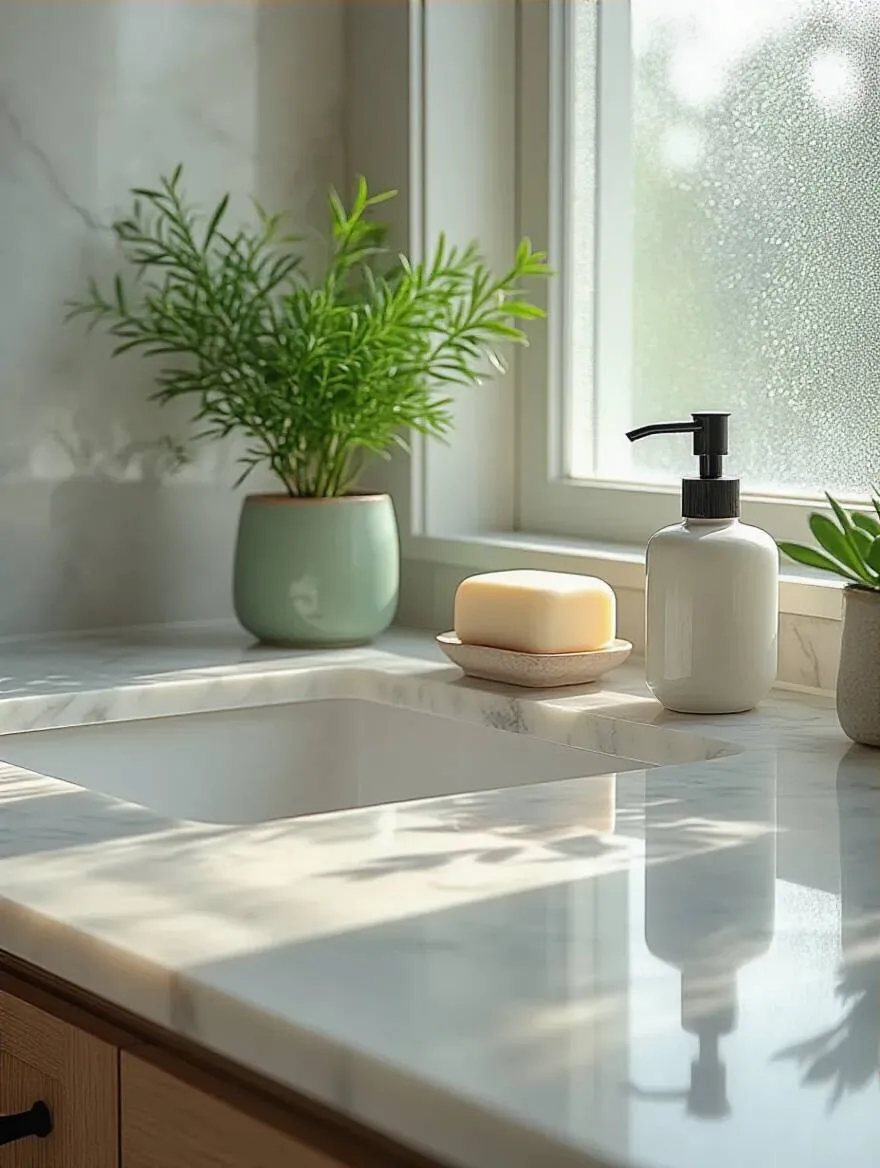
This means you must find a home for everything else. Be ruthless. Most of the things on your counter don’t need to be there. This isn’t about buying a million little plastic organizers. It’s about editing your life down to the beautiful essentials. A clear counter gives your mind space to breathe.
So, where do those essentials go?
For the few things that must live on the counter or a shelf, group them. A simple tray—maybe made of stone, wood, or a beautiful ceramic—can corral a few bottles and make them look like an intentional collection, not just clutter.
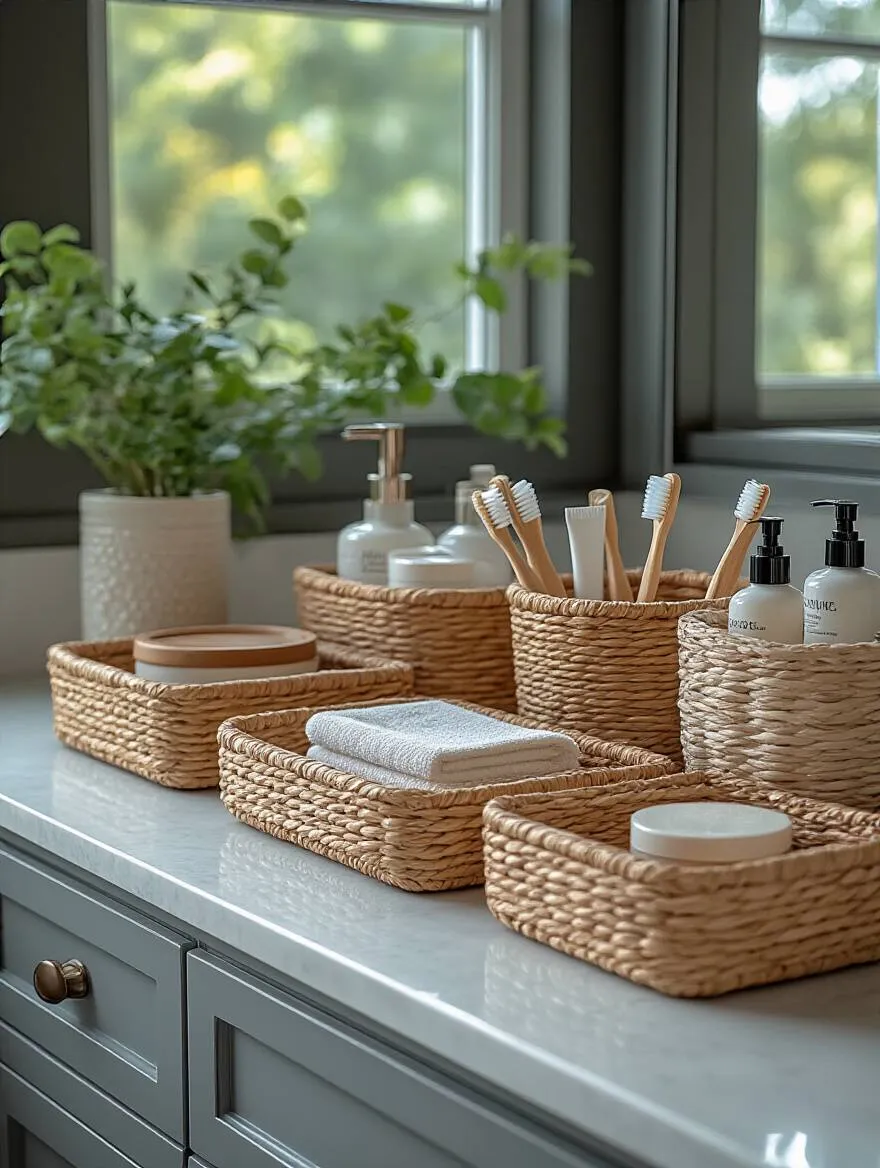
I love to use small bowls or dishes for this. A little ceramic dish for a bar of soap, another for jewelry you take off before a shower. It’s about creating small, beautiful moments. Instead of a chaotic jumble of products, you have a curated landscape. It makes the everyday act of getting ready feel more like a ritual.
And let’s not forget the soap itself.
Life is too short to use a ugly plastic bottle of soap. This is such a simple, inexpensive upgrade that makes a world of difference. Find a beautiful, refillable dispenser made of glass, ceramic, or stone. Then, buy your favorite hand soap in large, economical refill bags.
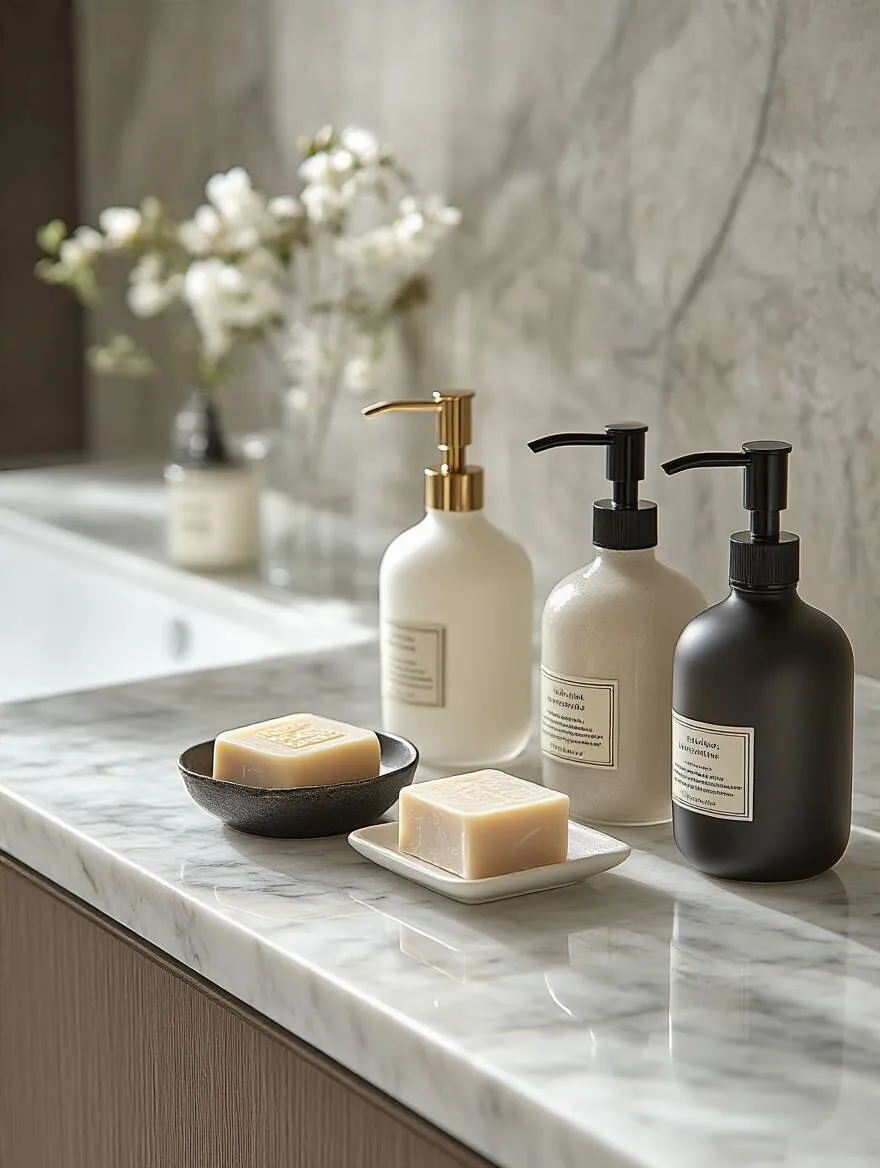
And for the shower, treat yourself to a beautiful bar of soap. I’m talking about a big, chunky bar of olive oil soap from Marseille, or something scented with lavender from Provence. Rest it on a simple ceramic dish. It feels wonderful, it smells divine, and it’s a small, daily pleasure. These little sensory details are what truly make a space feel luxurious.
What about some simple, open storage?
If you need a bit more storage, a few simple floating shelves are much better than a bulky cabinet. They keep the space feeling open and airy. I especially love a single, thick shelf made of reclaimed wood. It adds so much warmth and character.

Use the shelves to display the beautiful things. This is where you put your rolled-up towels, a few pretty bottles, a plant, and that basket holding your lotions. It’s not for hiding the half-empty bottles of shampoo. It’s a display space. It turns your storage into a beautiful part of the decor.
And for my final, and perhaps favorite, small touch.
Every bathroom needs a place to sit that isn’t the toilet. A small, simple stool is one of the most useful and charming things you can add. It can be a little rustic wooden milking stool, or a modern one made of concrete.

It’s a place to sit while you moisturize your legs. It’s a spot to rest a towel and a book next to the bath. It’s a perch for a child watching you get ready. It adds a human, humble element to the room and instantly makes it feel more welcoming and lived-in. To me, that small stool is the very symbol of Mediterranean Design: it’s simple, it’s useful, and it invites you to slow down and stay a while.
So you see, tesoro, creating a beautiful bathroom is not about following a list of trends. It’s about telling a story. It’s about choosing materials with soul, light that is kind, and objects that have meaning. It’s about creating a personal sanctuary that feels like a deep, relaxing breath.
Don’t be afraid of imperfection. A little crack in a tile, a patina on a faucet—these are the things that give a room its heart. So start small. Buy those beautiful towels. Install that dimmer switch. Find one piece of art that you love. Step-by-step, you can transform a simple room into your own personal sliver of the Mediterranean. Your escape awaits.